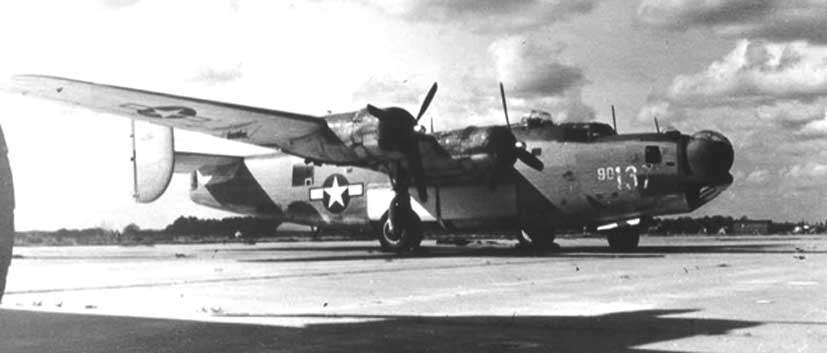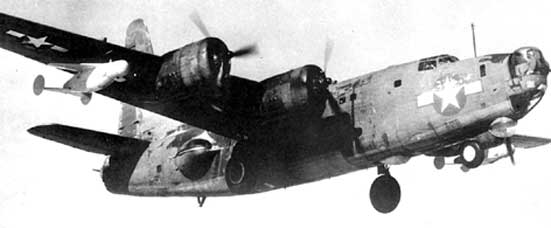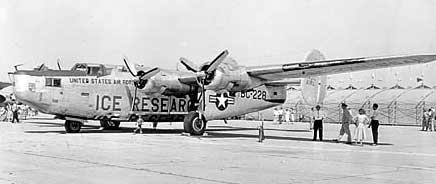

| Designed in 1938 as a rival to Boeing's B-17, the B-24 proved to be one of the USA's most versatile aircraft of World War II. In 1944/45 along with the USAAF's tests with the B-17 and the B-29. The B-24 "Liberator" was used to tested the of the JB-2, the , to see the Aircraft's feasibility as a air-launch platform as well as the feasibility of the JB-2 in that roll. It can by asumed that the US Navy took a great interest in these tests, as they were at the time trying to find the best use for the new missile. |

|
However the Navy had another ASM in the form of the SWOD MK 9/ASM-N-2 "Bat" a glide bomb with an active radar seeker, this weapon was better suited to the Navy's needs in the anti-shiping roll, with the LTV-A-1 being used from ships and submarines to attack shore targets A number of tests of the US Navy's "Bat" were made in late 1944 with the missal being fitted to the PB4Y-1 were relatively successful, and the weapon was declared combat ready in January 1945, seeing service in May 1945 fitted on to the Consolidated PB4Y-2 "Privateer". |
| Also In 1946 a B-24M # 44-41986 was modified by having a General Electric I-16 jet engine fitted in the waist compartment, with a large air scoop built on top of the fuselage and the exhaust exiting at the former tail-gunner's position. This was undertaken by NACA Lewis Research Center for testing of the effects of icing on jet engines |
 |